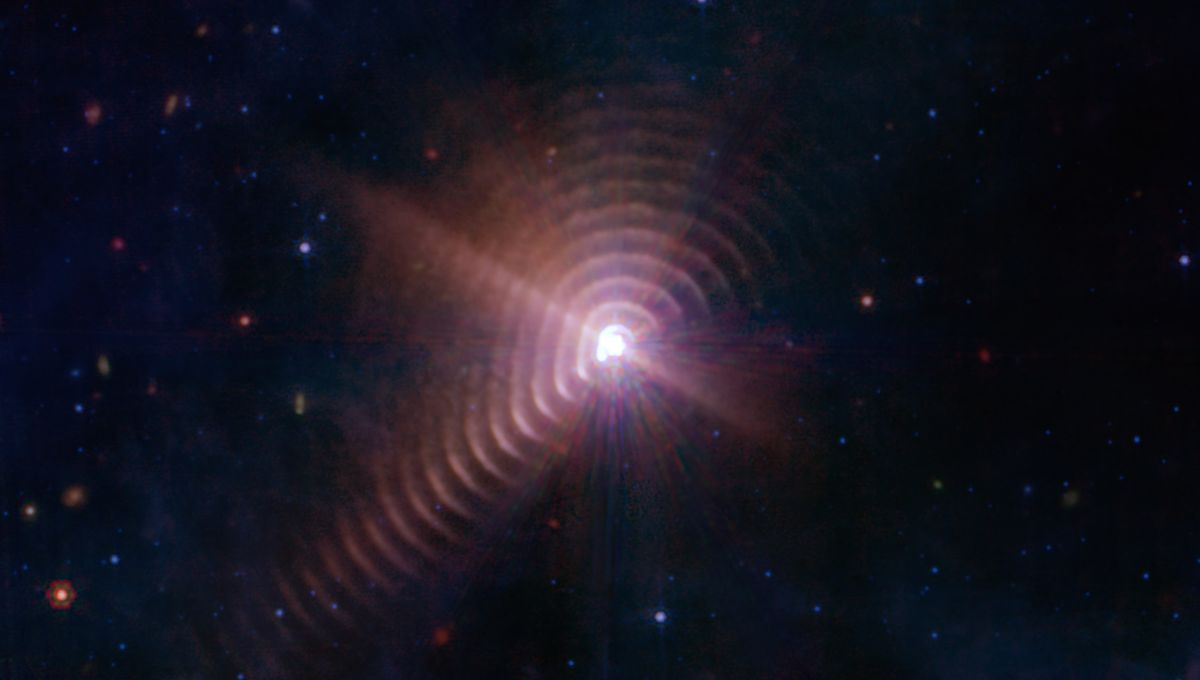
In August, we reported a breathtaking image of binary star system WR140 taken by JWST. Astronomers have now published scientific results related to that incredible object – and more.
Combining the latest space telescope and decades of observations from Earth, scientists have obtained the best understanding of what these shells are, how they are produced, and the role that starlight plays in sculpting them.
WR140 is made of two stars: one is a Wolf-Rayet (giving the name to the system) 20 times the mass of our Sun. The second one is a bright hot star still burning hydrogen, with a mass of 50 suns. They orbit each other every 7.93 years. When they get close to each other, their stellar winds interact, creating dust shells.
Using the Keck Observatory data from 2001 to 2017, researchers measured the motion of these shells with exquisite precision. The interaction of the winds happens on the surface of a cone-shaped shock front, where dust is created. The motion of the stars then spreads it out. Finally, their starlight accelerates this dusty shell outwards.
“It’s hard to see starlight causing acceleration because the force fades with distance, and other forces quickly take over,” lead author of the Keck paper Yinuo Han from Cambridge’s Institute of Astronomy, said in a statement. “To witness acceleration at the level that it becomes measurable, the material needs to be reasonably close to the star or the source of the radiation pressure needs to be extra strong. WR140 is a binary star whose ferocious radiation field supercharges these effects, placing them within reach of our high-precision data.”
The acceleration is a key discovery in this research. Before, researchers expected the motion of the outflows to happen at a constant speed. Instead, the long data collection allowed scientists to measure it precisely and see that the shells are accelerated.
“In one sense, we always knew this must be the reason for the outflow, but I never dreamed we’d be able to see the physics at work like this,” co-author Professor Peter Tuthill from the University of Sydney. “When I look at the data now, I see WR140’s plume unfurling a like giant sail made of dust. When it catches the photon wind streaming from the star, like a yacht catching a gust, it makes a sudden leap forward.”
However, this is not all, as JWST allowed for an even deeper look at the shells better that any instrument before. Researchers could track at least 17 shells, suggesting that this process has been going on for at least 130 years. They found that the shells are rich in carbonaceous dust grain. This suggests that Wolf-Rayet binaries can “pollute” the interstellar medium with organic compounds.
“We’ll now be able to make observations like this much more easily than from the ground, opening a new window into the world of Wolf-Rayet physics,” added Ryan Lau who led the JWST study.
The Keck observations were published in the journal Nature, while the JWST one is available in Nature Astronomy.
Source Link: Extraordinary Shells Around Stars Are Caused By Light Accelerating Dust